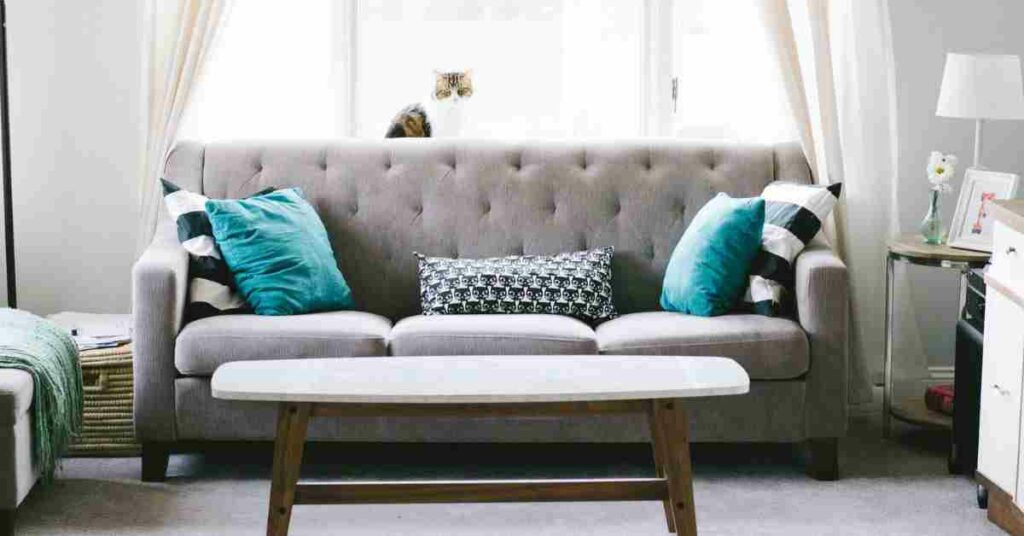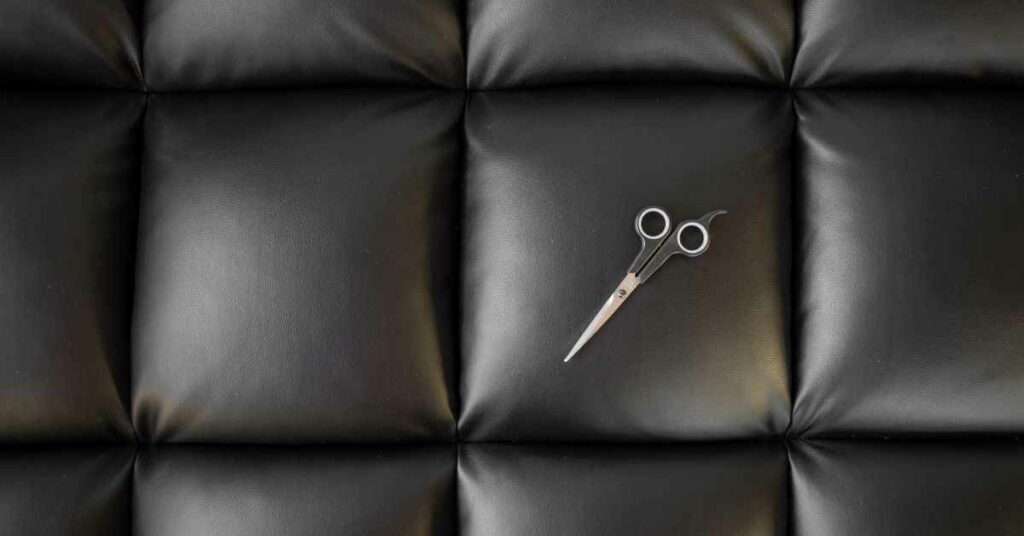Recliners come in a variety of fabrics, ranging from traditional to contemporary. Common types of fabric used in recliners are cotton, linen, velvet, microfiber, Polyester, silk, wool, and chenille.
8 Types Of Fabric Used In Recliners
Cotton
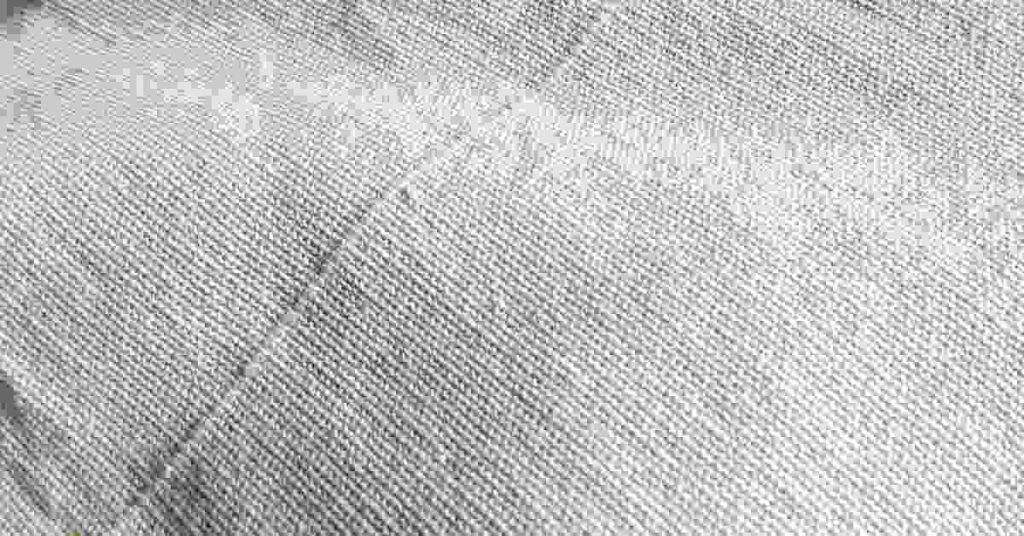
Cotton is a natural fiber that has been used for upholstery for centuries. It’s soft and durable, making it ideal for recliners. It’s the most popular upholstery material for recliners because it’s a natural fabric. Furthermore, cotton fabrics can come in many different colors and textures which gives you plenty of options when selecting the right fabric for your recliner.
Advantages:
- Cotton is also relatively inexpensive compared to other fabric types and blends.
- It’s a natural fiber, so it’s more environmentally friendly than synthetic materials.
- It’s available in the colors you can imagine.
- Cotton is resistant to pests, abrasions, and mildew.
- Cotton is soft and breathable which makes it comfortable to sit on for long periods, especially in warm climates.
- It’s completely washable and quite durable if properly cared for.
Disadvantages:
- Cotton is susceptible to wrinkles and shrinkage, so extra care must be taken when washing or drying it.
- It’s also more prone to fading and staining than other fabrics which means regular cleaning is necessary.
- Cotton absorbs spills and may stink.
Velvet
Velvet is a luxurious fabric that adds a touch of elegance to any recliner. The fabric is soft and sumptuous, making it the perfect choice for anyone looking for comfort and style. It’s often used to make high-end recliners and sofas. Velvet can come in a variety of colors and prints allowing you to customize the look of your recliner.
Advantages:
- It has a luxurious feel and looks that can add character to any room.
- Velvet is soft and comfortable, making it an excellent choice for upholstered furniture.
- It’s available in many colors.
- The color of velvet fabric doesn’t fade easily.
- The fabric resists dirt and dust which makes it easy to maintain.
Disadvantages:
- Velvet can be quite expensive compared to other fabrics.
- The fabric doesn’t last well under direct sunlight.
- Velvet attracts dust and pet fur, so regular cleaning may be necessary.
Lenin
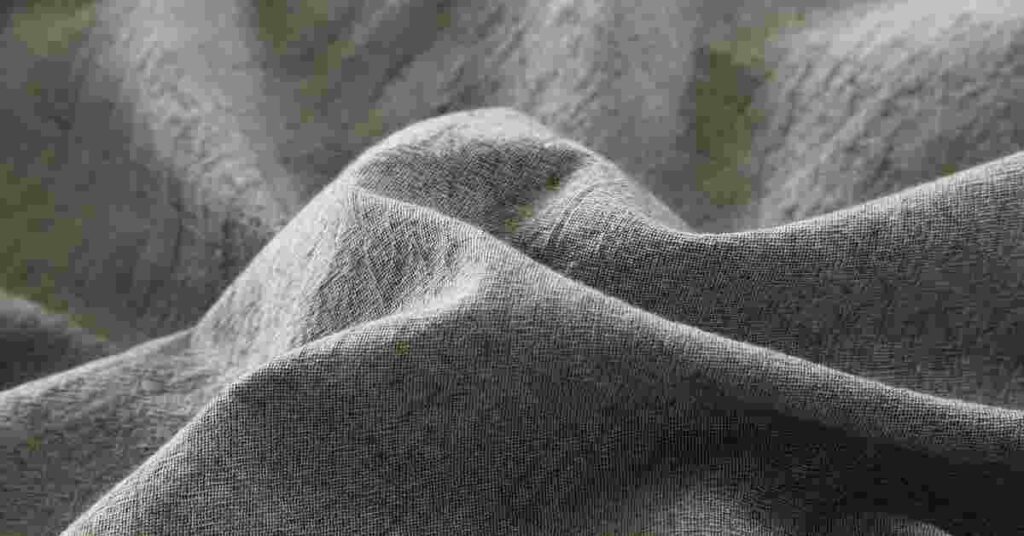
Linen is a synthetic fabric that looks great in beach-style decor. Recliners upholstered in linen are a classic choice for coastal-inspired living rooms. It’s a strong, and durable fabric, which is greatly repellent to insects and bacteria. This makes it an ideal choice for recliners with low maintenance. Furthermore, its breathable and absorbent nature makes it a great choice for both cold and warm areas. The material comes in different colors and patterns allowing you to customize the look of your recliner.
Advantages:
- Lenin is an affordable fabric.
- It is strong and durable, making it an excellent choice for upholstered furniture.
- Lenin is breathable and absorbing, making it a great choice for warm areas.
- It’s cold in summer and warm in winter.
- The fabric has good elasticity which makes it comfortable for recliners.
- It’s skin-friendly and resistant to mildew and molds.
Disadvantages:
- Lenin can be crinkly so it may get wrinkled easily.
- It absorbs liquid spill and may stink.
Microfiber
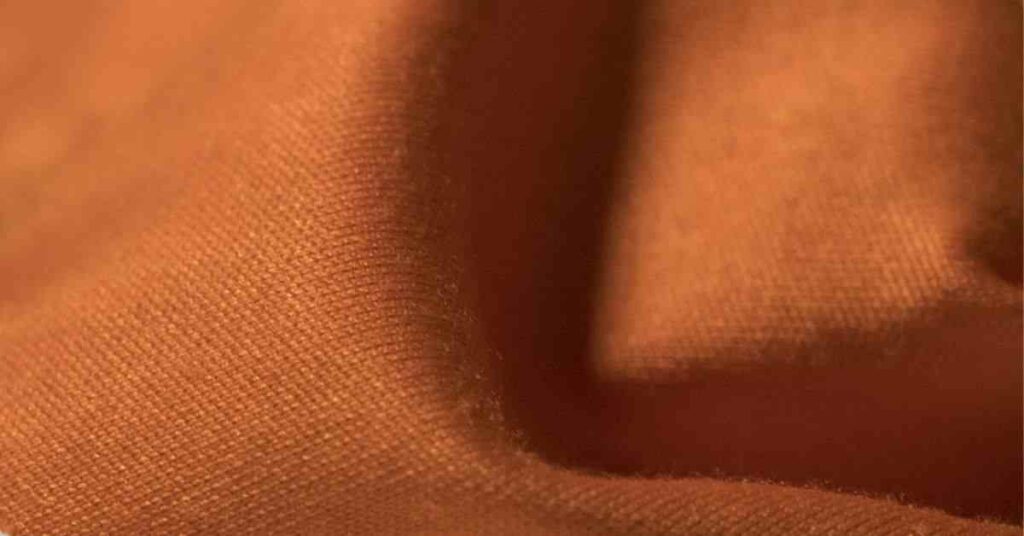
Microfiber is a synthetic fabric that looks and feels like suede. It has become increasingly popular in recent years. It’s strong, durable, and great at resisting spills and stains, making it ideal for upholstered furniture. The material can come in different textures and colors allowing you to customize the look of your recliner.
Advantages:
- It is strong and durable, making it an excellent choice for upholstered furniture.
- Microfiber is resistant to spills and stains which makes it a low-maintenance option.
- The fabric has good elasticity which makes it comfortable for recliners.
Disadvantages:
- Microfiber can be slippery and may require some extra padding to make it comfortable.
- It’s not as breathable as other fabrics, so it can become warm in hot climates.
- It’s also more expensive than other fabrics, making it a less budget-friendly option.
- The fabric can also attract dust and pet hair, so regular cleaning may be necessary.
- Microfiber is not as durable as some other fabrics, meaning it can wear out more quickly.
Polyester
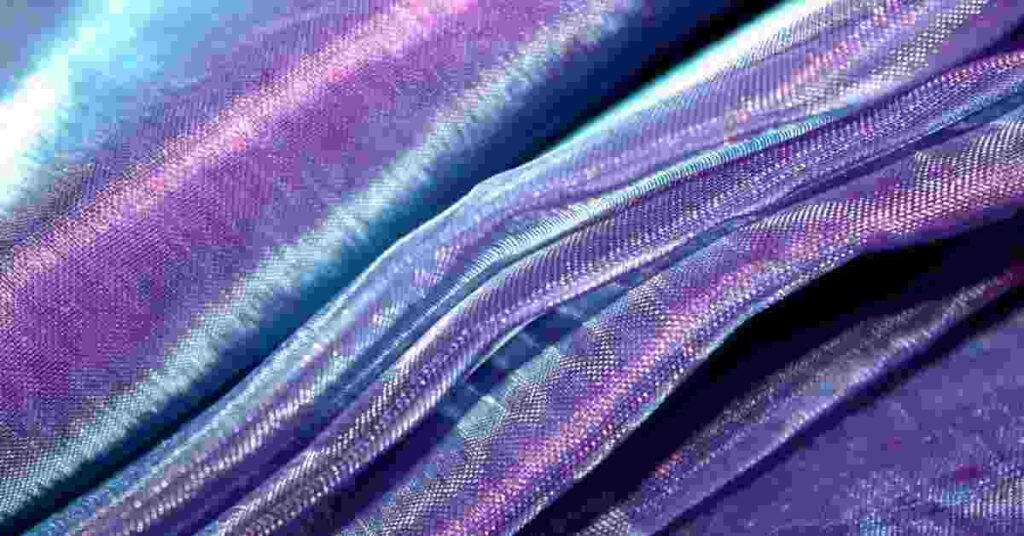
It’s a synthetic material that is strong and resistant to wrinkles, fading, and shrinking. It also has good elasticity which makes it an excellent choice for upholstery on recliners. The polyester fabric typically comes in different textures and colors allowing you to customize the look of your recliner.
Advantages:
- It is one of the most durable fabrics available for upholstery.
- Polyester is resistant to mildew, fading, and shrinkage.
- The fabric has good elasticity which makes it ideal for recliners.
- It’s relatively inexpensive compared to other fabrics.
- It’s resistant to spills and can be dried and cleaned very easily.
Disadvantages:
- Polyester can be slippery, so some extra padding may be needed to make it comfortable.
- It’s not as breathable as other fabrics and can trap heat which makes it uncomfortable in hot climates.
- Polyester is easily flammable and also not environmentally friendly.
Silk
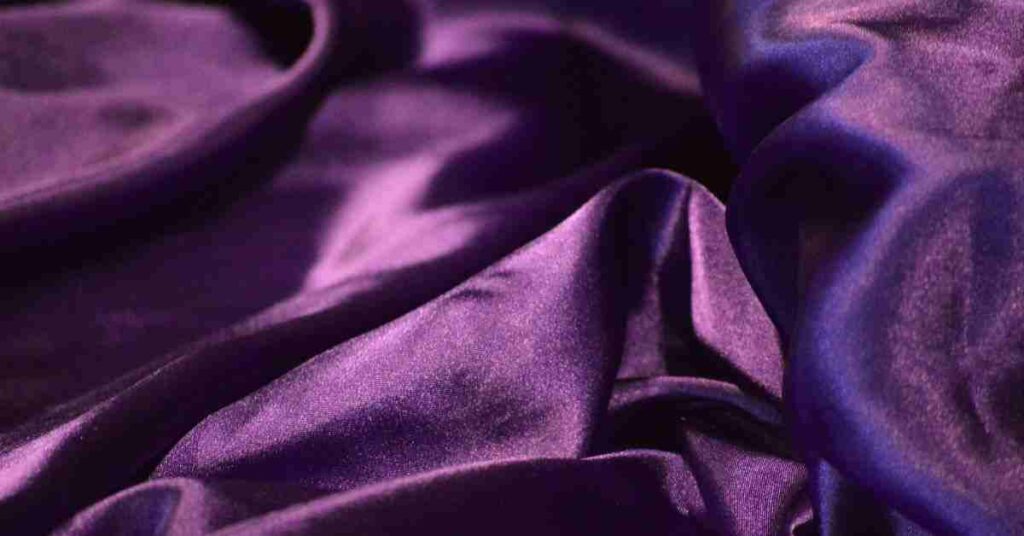
Silk is a natural fabric that is a popular material for upholstering luxurious recliners. It’s strong, durable, and great at resisting spills and stains, making it an ideal choice for those looking for a low-maintenance option. The material comes in different colors and textures allowing you to customize the look of your recliner.
Advantages:
- It is a strong and durable natural fabric, making it an excellent choice for upholstered furniture.
- Silk is resistant to spills and stains which makes it a low-maintenance option.
- The fabric has good elasticity and doesn’t lose shape which makes it comfortable for recliners.
- The fabric has a luxurious feel and looks that can add character to any room.
- It’s available in a wide range of colors, patterns, and qualities.
Disadvantages:
- Silk can be quite expensive compared to other fabrics.
- Silk doesn’t fare well when exposed to direct sunlight.
- The fabric also absorbs liquid, and removing the stains may require dry cleaning.
- The fabric is prone to snag, so extra care may be needed when using or cleaning it.
Wool

Wool is a luxurious fabric that has become increasingly popular for upholstering recliners. It’s strong, durable, and great at resisting spills and stains, making it an ideal choice for those looking for a low-maintenance option. The material comes in different colors and textures allowing you to customize the look of your recliner.
Advantages:
- It is strong and durable, making it an excellent choice for upholstered furniture.
- The fabric has a luxurious feel and looks that can add character to any room.
- It’s a natural fabric and very environmentally friendly.
- It repels moisture and it’s resistant to flames.
- Wool is also resistant to spills and stains which makes it a low-maintenance option.
- The fabric has good elasticity which makes it comfortable for recliners.
- It’s skin-friendly and resistant to allergens.
Disadvantages:
- Wool can be quite expensive compared to other fabrics.
- It’s not as breathable as other fabrics, so it can become warm in hot climates.
- The fabric attracts dust and pet hair, so regular cleaning may be necessary.
Chenille

Chenille is a soft, plush, and luxurious fabric with an elegant sheen. It provides recliners with a luxurious look and feel which is why it is used in reclining accent chairs and other statement furniture. It’s strong, durable, and great at resisting spills and stains, making it also an ideal choice for those looking for a low-maintenance option. The material can come in different colors and textures allowing you to customize the look of your recliner.
Advantages:
- It is strong and durable, making it an excellent choice for upholstered furniture.
- Chenille is resistant to spills and stains which makes it a low-maintenance option.
- The fabric has good elasticity which makes it comfortable for recliners.
- The fabric has a luxurious feel and looks that can add character to any room.
Disadvantages:
- Chenille can be quite expensive compared to other fabrics.
- It’s not as breathable as other fabrics, so it can become warm in hot climates.
- The fabric is prone to crush, so regular fluffing may be necessary.
- The fabric also attracts dust and pet hair, so regular cleaning may be necessary.
- Chenille is not as durable as some other fabrics, meaning it can wear out more quickly.
One of the advantages of fabric upholstery over leather upholstery is that it gives you more options to choose from. No matter what type of fabric you choose for your recliner, opting for high-quality upholstery will ensure that it stands the test of time. And with proper care and maintenance, any fabric-upholstered recliner can last for many years.

